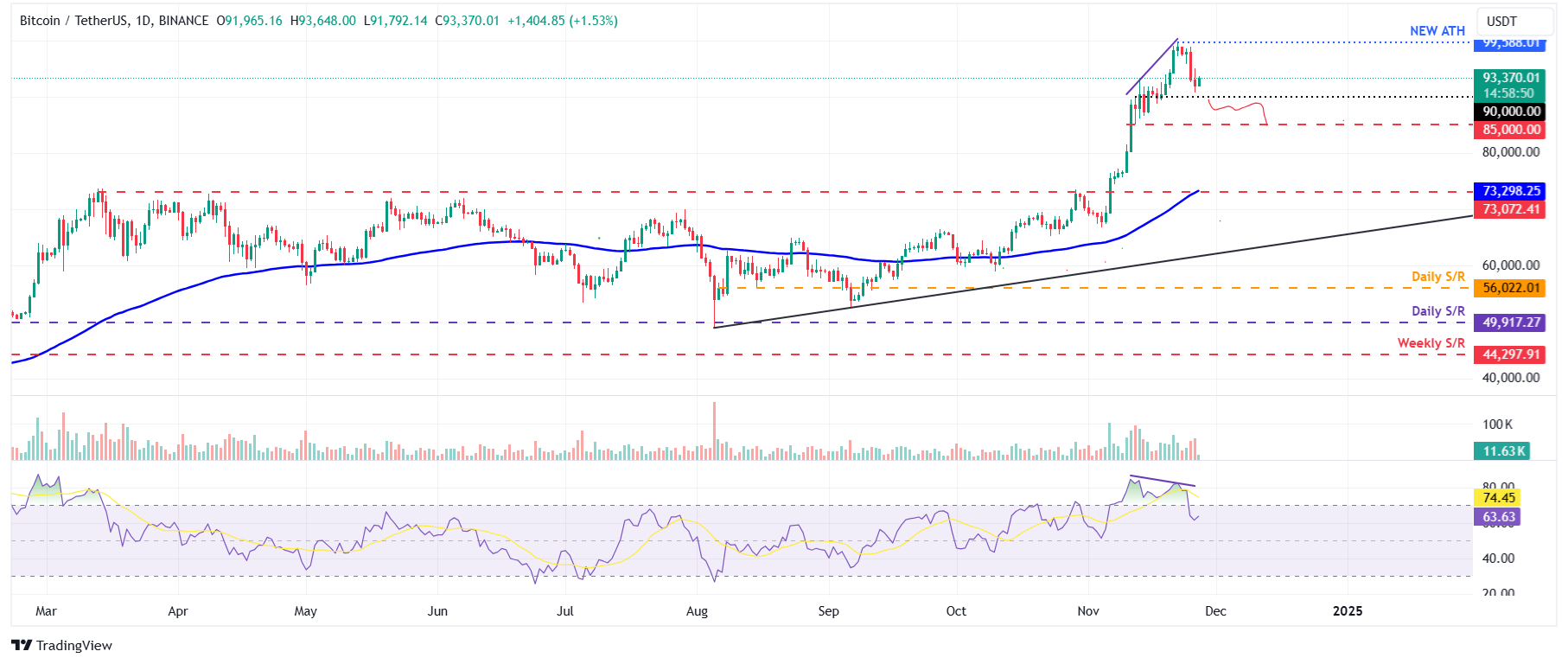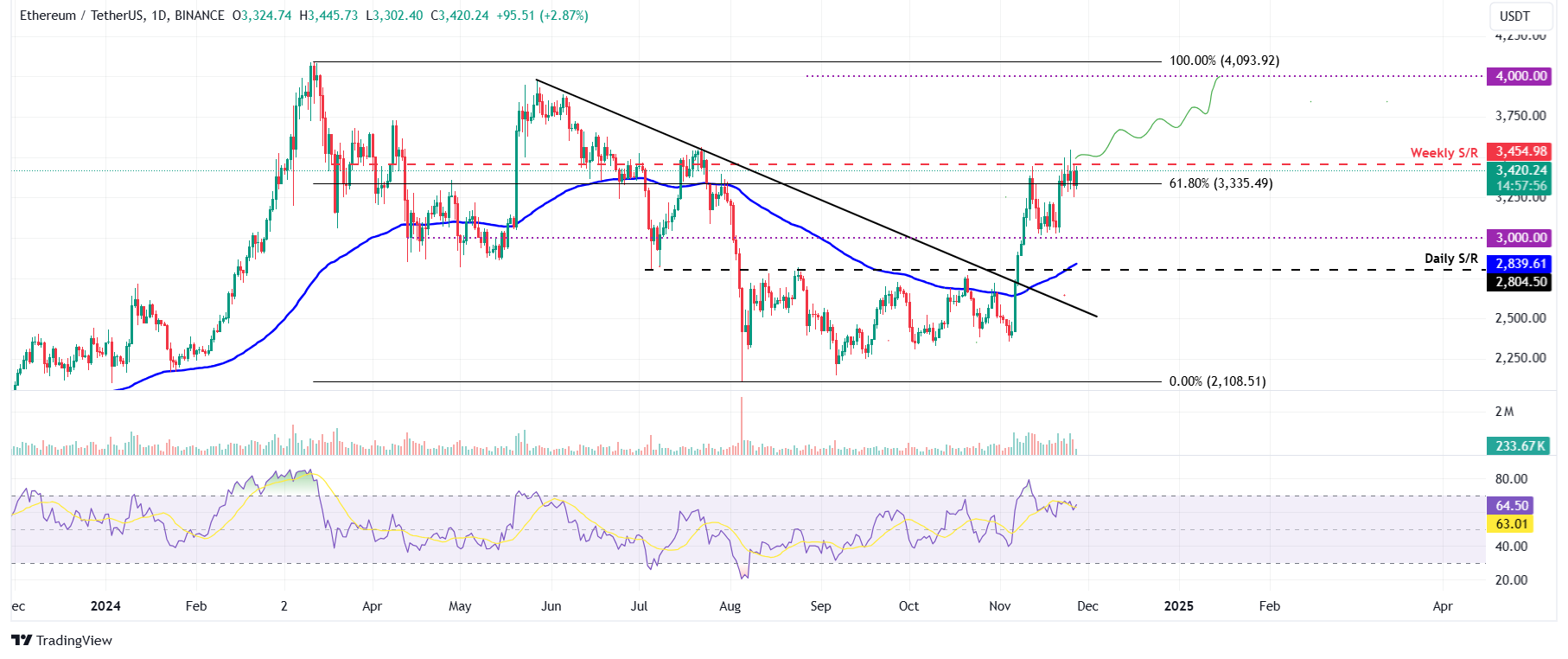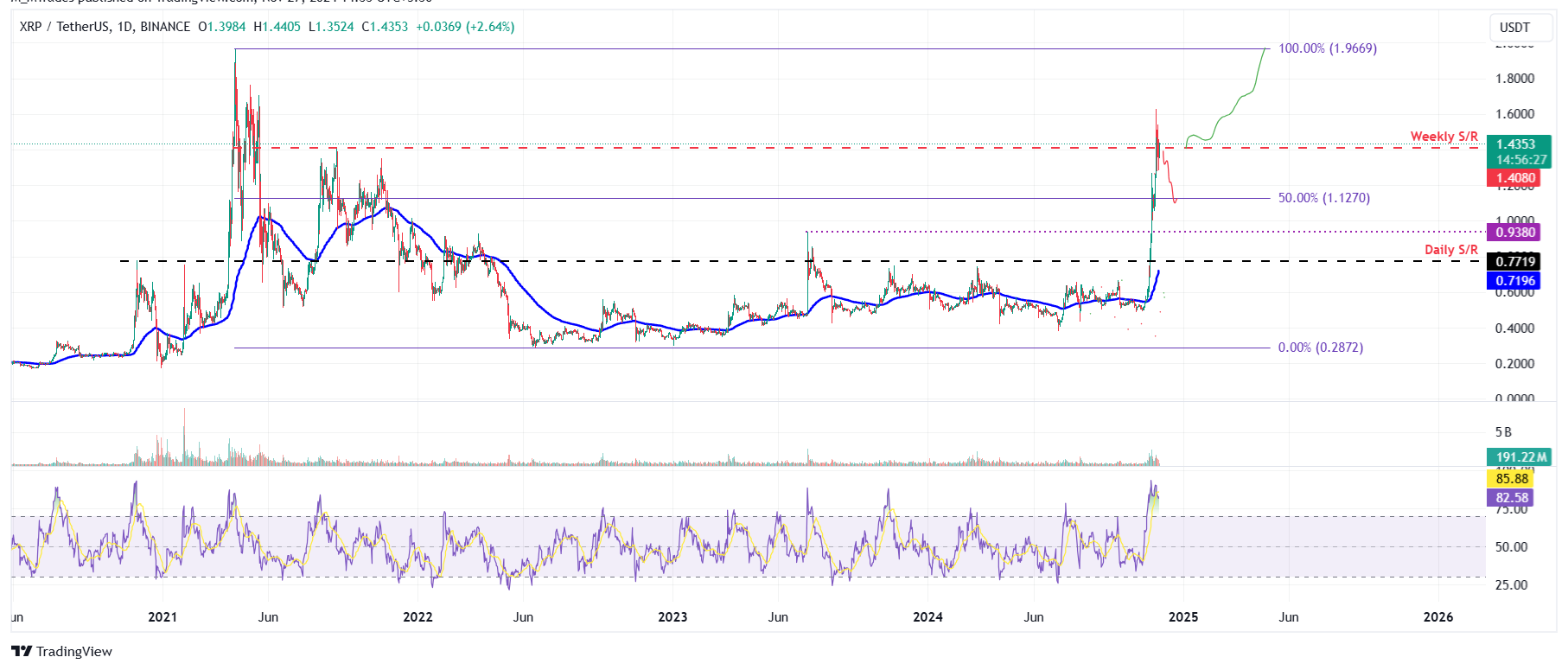Top 3 Price Prediction Bitcoin, Ethereum, Ripple: BTC drops below $92,000 as technical indicator shows a bearish divergence
- Bitcoin price hovers around $93,400 on Wednesday after declining 6% since Monday.
- Ethereum price is nearing its weekly resistance of $3,454; a close above this level indicates a rally ahead.
- Ripple price closed below the key support level of $1.40 on Tuesday, suggesting a pullback on the horizon.
Bitcoin (BTC) hovers around $93,400 on Wednesday after declining 6% since the start of the week. BTC's technical outlook supports the price correction, as the Relative Strength Index (RSI) shows a bearish divergence. Ripple (XRP) followed BTC and closed below a key support level on Tuesday, suggesting a pullback on the horizon. However, Ethereum (ETH) shows signs of optimism as it approaches its critical resistance; a close above this resistance indicates a rally ahead.
Bitcoin price momentum shows bearish divergence
Bitcoin price reached a new all-time high (ATH) of $99,588 on Friday and started declining. BTC declined 7%, falling to a low of $90,791 on Tuesday. At the time of writing on Wednesday, it hovers slightly above $93,400.
If BTC’s pullback continues, it could extend the decline to retest its important psychological level of $90,000. A successful close below this level would extend an additional decline to test its next support level at $85,000.
Moreover, the Relative Strength Index (RSI) indicator supports this price pullback in the daily chart. The higher high in BTC’s price formed on Friday does not reflect the RSI lower high for the same period. This development is termed a bearish divergence, often leading to a trend reversal or short-term pullback.

BTC/USDT daily chart
If BTC finds support around the $90,000 level and recovers, it could rally to reach its ATH level of $99,588.
Ethereum price is poised for a rally if it closes above $3,460
Ethereum price faced rejection from its weekly level of $3,454 and declined 2.63% on Tuesday to find support around the 61.8% Fibonacci level (drawn from its March high of $4,093 to its August low of $2,108) at $3,335. It trades around $3,420 on Wednesday, approaching its weekly resistance again.
If ETH breaks and closes above $3,454, it could extend the rally by 16% to the psychologically important $4,000 level.
The RSI on the daily chart reads at 64, above its neutral level of 50, indicating that bullish momentum is gaining traction well below overbought conditions.

ETH/USDT daily chart
However, if ETH fails to close above the $3,454 weekly resistance and closes below $3,330, it could face a pullback to retest the $3,000 support level.
Ripple price is set for a downturn as it closes below weekly support
Ripple price faced resistance and closed below its weekly support level of $1.40 on Tuesday after rallying near 36% the previous week. At the time of writing on Wednesday, XRP is struggling to recover and trades at around $1.43.
If XRP finally breaks below $1.40, it could extend the decline to retest the 50% price retracement level (drawn from its April 2021 high of $1.96 to its June 2022 low of $0.28) at $1.12.
Moreover, the RSI stands at 82, signaling overbought conditions and suggesting an increasing risk of a correction. The RSI’s move out of overbought territory could clearly signify a pullback.

XRP/USDT daily chart
On the other hand, if XRP closes above the $1.40 level, it could extend the rally to retest its three-year high of $1.96 (April 2021).
Bitcoin, altcoins, stablecoins FAQs
Bitcoin is the largest cryptocurrency by market capitalization, a virtual currency designed to serve as money. This form of payment cannot be controlled by any one person, group, or entity, which eliminates the need for third-party participation during financial transactions.
Altcoins are any cryptocurrency apart from Bitcoin, but some also regard Ethereum as a non-altcoin because it is from these two cryptocurrencies that forking happens. If this is true, then Litecoin is the first altcoin, forked from the Bitcoin protocol and, therefore, an “improved” version of it.
Stablecoins are cryptocurrencies designed to have a stable price, with their value backed by a reserve of the asset it represents. To achieve this, the value of any one stablecoin is pegged to a commodity or financial instrument, such as the US Dollar (USD), with its supply regulated by an algorithm or demand. The main goal of stablecoins is to provide an on/off-ramp for investors willing to trade and invest in cryptocurrencies. Stablecoins also allow investors to store value since cryptocurrencies, in general, are subject to volatility.
Bitcoin dominance is the ratio of Bitcoin's market capitalization to the total market capitalization of all cryptocurrencies combined. It provides a clear picture of Bitcoin’s interest among investors. A high BTC dominance typically happens before and during a bull run, in which investors resort to investing in relatively stable and high market capitalization cryptocurrency like Bitcoin. A drop in BTC dominance usually means that investors are moving their capital and/or profits to altcoins in a quest for higher returns, which usually triggers an explosion of altcoin rallies.



